Step Up Your Self-Care Routine with Foot Massage
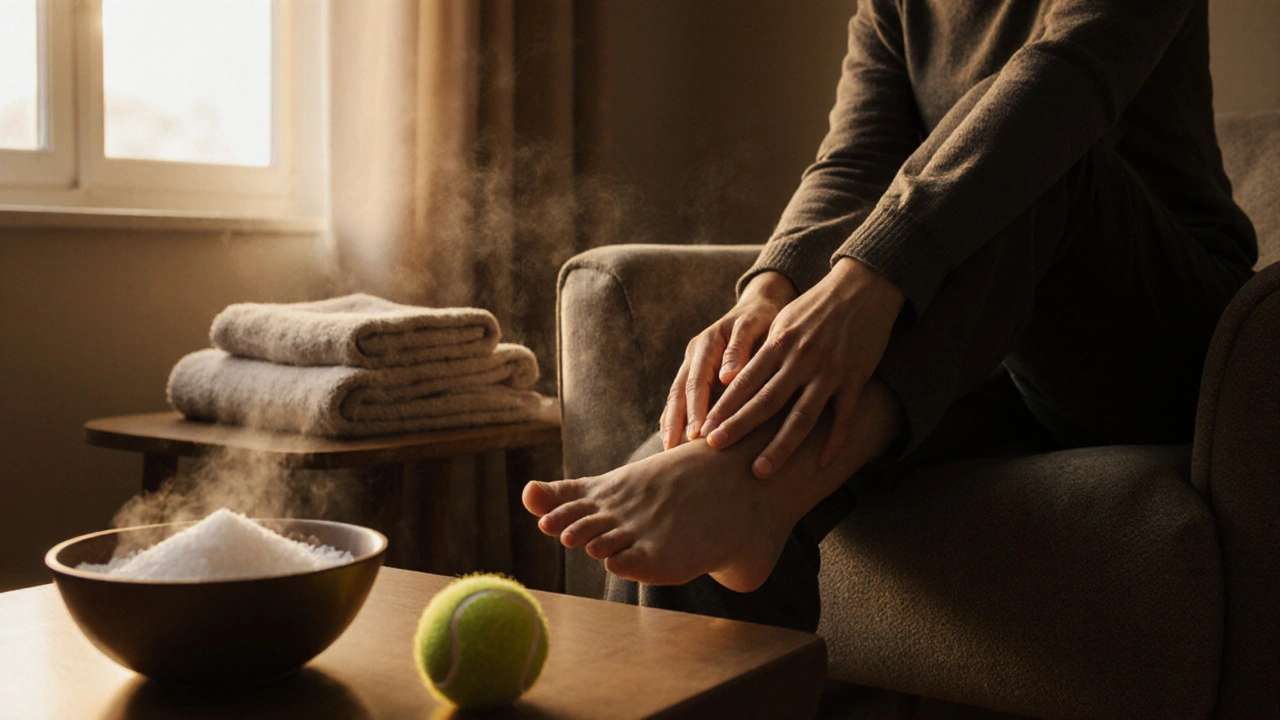
Ever feel like your feet are carrying the weight of your whole day? They are. You stand, walk, run, rush - and rarely give them a second thought. But here’s the truth: your feet are your foundation. If they’re tired, achy, or tense, everything else feels off too. That’s where foot massage isn’t just a luxury - it’s a non-negotiable part of real self-care.
Why Your Feet Deserve More Than a Quick Rub
Your feet have 26 bones, 33 joints, and over 100 muscles, tendons, and ligaments. They absorb your entire body weight with every step. And yet, most people treat them like afterthoughts - shoved into shoes all day, ignored until they hurt.
Foot massage doesn’t just feel good. It triggers real changes in your nervous system. A 2023 study from the University of Westminster found that just 15 minutes of targeted foot massage lowered cortisol levels by an average of 24% in participants. Cortisol is your main stress hormone. Lower it, and your whole body relaxes - heart rate slows, blood pressure drops, and your mind finally stops buzzing.
Think of it like hitting a reset button. You don’t need hours. You don’t need fancy tools. Just 10 minutes a day, done right, can turn foot pain into calm.
How Foot Massage Works: More Than Just Pressure
Foot massage isn’t just about rubbing sore spots. It’s based on reflexology - the idea that specific areas on your feet connect to organs and systems in your body. Press the ball of your foot, and you’re stimulating your lungs. The arch? That’s your spine. The heel? Your lower back.
It’s not magic. It’s nerves. Your feet are packed with sensory receptors. When you apply steady pressure, those signals travel up your spinal cord and tell your brain: “Relax. You’re safe.” That’s why a good foot massage can ease headaches, improve digestion, and even help you sleep deeper.
And you don’t need to believe in reflexology to benefit. Even plain old manual pressure increases circulation. Better blood flow means more oxygen to tired muscles, faster removal of lactic acid, and less swelling. If you’ve ever had swollen feet after standing all day, you know how powerful that is.
Simple Foot Massage Techniques You Can Do Right Now
You don’t need a professional to get results. Here’s a five-step routine you can do while watching TV or before bed:
- Warm it up. Soak your feet in warm water for 5-10 minutes. Add Epsom salts if you have them - magnesium helps muscles unwind.
- Thumb circles. Use your thumb to make slow, firm circles on the ball of your foot. Work from the big toe side to the little toe side. Do this for 1-2 minutes per foot.
- Arch squeeze. Hold your foot with both hands and gently squeeze along the arch. Roll your thumbs from heel to ball. Repeat 5 times.
- Toe pulls. Gently pull each toe one at a time, holding for 5 seconds. This releases tension in the plantar fascia - the band that often causes heel pain.
- Heel press. Use your knuckle to press into the heel in small circles. This area holds a lot of stored tension. Spend 30 seconds here.
Do this twice a day - morning and night. You’ll notice a difference in as little as three days. Your feet will feel lighter. Your legs will feel less heavy. Your whole body will start to unwind.

Tools That Actually Help (No Gimmicks)
There’s a market full of foot massagers that promise miracles. Most are overpriced and underwhelming. Here’s what actually works:
- A tennis ball. Roll it under your foot while sitting. Apply body weight for deeper pressure. Free. Effective. No plug needed.
- A frozen water bottle. Roll it under your foot for 5 minutes. Cold reduces inflammation. Great for plantar fasciitis or after a long walk.
- Coconut or almond oil. Use a few drops to reduce friction. The scent alone can be calming. Lavender oil mixed in? Even better.
- A foam roller. Sit on a chair, place the roller under your foot, and roll slowly from heel to toe. Do this for 2 minutes per foot.
Forget electric massagers with 12 settings. If you’re not using your own hands, you’re missing the connection. Your touch carries intention. That’s what makes it healing.
When Foot Massage Isn’t Enough
Foot massage helps - but it’s not a cure-all. If you have persistent pain, numbness, swelling, or tingling that doesn’t improve after a week of regular massage, see a podiatrist. These could be signs of nerve issues, diabetes complications, or circulatory problems.
Also, avoid deep pressure if you have open sores, infections, blood clots, or are in the first trimester of pregnancy. Gentle touch is fine. Deep work isn’t.
And if your feet are always cold? That’s not just about weather. Poor circulation can be linked to thyroid issues or heart health. Massage helps, but it’s a symptom fix - not a root fix.
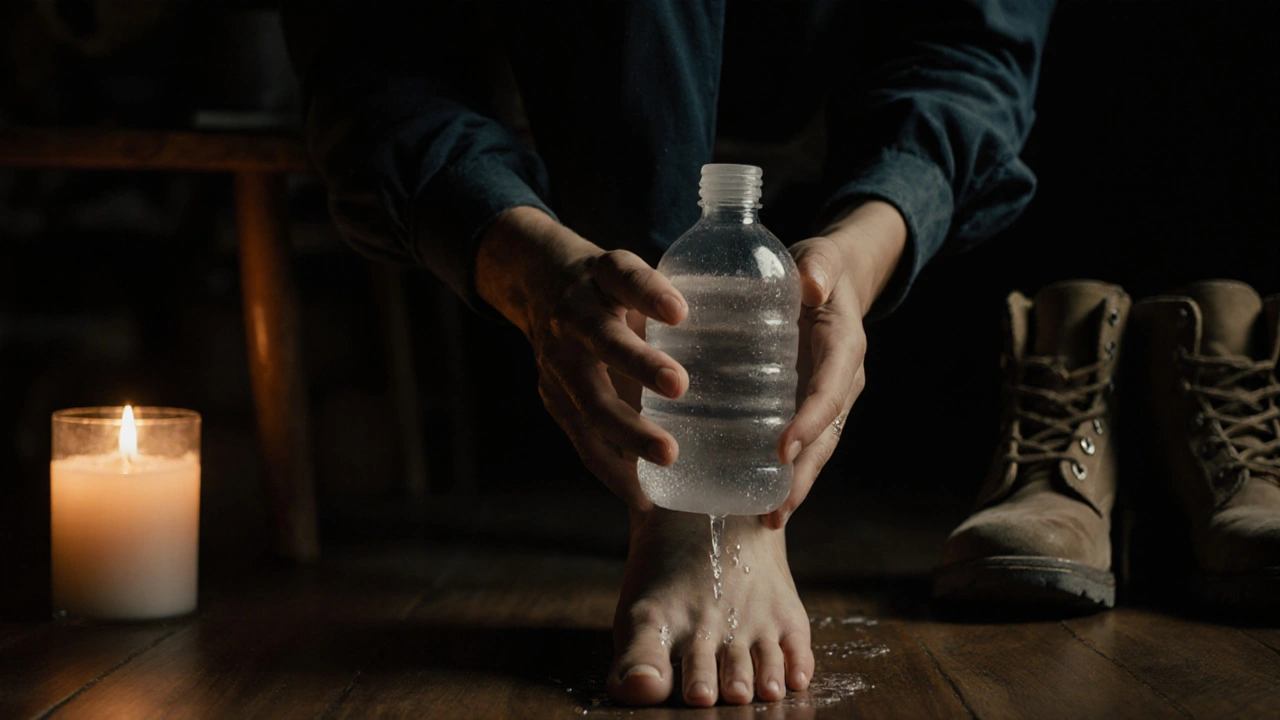
Make It a Ritual, Not a Chore
The best self-care routines stick because they’re enjoyable. So pair your foot massage with something you love:
- Listen to your favorite podcast or calming music.
- Light a candle with a scent you find soothing - sandalwood, vanilla, or eucalyptus.
- Do it right after your evening shower, when your skin is warm and soft.
- Turn it into a quiet moment before bed - no screens, no noise, just you and your feet.
Treat it like brushing your teeth. Not because you have to - because you deserve to feel good.
Real People, Real Results
Sarah, 42, a teacher in Brighton, started massaging her feet for 10 minutes after school. She had chronic heel pain from standing on concrete all day. After two weeks, she stopped using her insoles. After a month, she slept through the night for the first time in years.
James, 58, a warehouse worker in Manchester, began rolling a tennis ball under his feet during lunch breaks. His foot pain dropped from a 7/10 to a 2/10 in three weeks. He now does it with his wife every night. “We don’t talk,” he says. “We just sit. And for once, we’re both quiet.”
That’s the quiet power of foot massage. It’s not about fixing you. It’s about reminding you that you’re worth the attention.
Foot Massage Isn’t Optional - It’s Essential
You wouldn’t skip oil changes for your car. Why skip care for your feet? They carry you through every day. They deserve more than a quick stretch before bed.
Start small. Five minutes today. Ten tomorrow. Build it into your rhythm. You won’t notice the change all at once. But one day, you’ll realize you’re walking differently - lighter, steadier, calmer.
Your feet aren’t just body parts. They’re your connection to the ground, to your body, to your peace. Treat them like it.
Can foot massage help with insomnia?
Yes. Foot massage activates the parasympathetic nervous system, which signals your body to relax and prepare for sleep. Studies show that people who do a 15-minute foot massage before bed fall asleep faster and report deeper sleep. The combination of pressure, warmth, and focused attention lowers stress hormones and raises serotonin - a key sleep chemical.
How often should I do a foot massage?
Daily is ideal, especially if you’re on your feet a lot. Even 5-10 minutes a day helps. If you’re short on time, aim for at least 3-4 times a week. Consistency matters more than duration. Think of it like watering a plant - a little every day beats a big soak once a week.
Is reflexology scientifically proven?
Reflexology as a diagnostic tool - like saying a sore spot on your foot means your liver is sick - isn’t backed by science. But the physical effects of foot massage are. Pressure on the feet triggers nerve pathways that reduce pain, lower stress, and improve circulation. You don’t need to believe in energy meridians to benefit from the physical touch.
Can I use foot massage if I have diabetes?
Yes - but with caution. If you have numbness, open wounds, or poor circulation, avoid deep pressure or sharp tools. Use light, gentle strokes. Always check your feet daily for cuts or sores. Talk to your doctor before starting any new routine. Foot care is critical for people with diabetes, and massage can help circulation - if done safely.
What’s the best time of day for a foot massage?
Morning helps wake up your feet and reduce swelling. Nighttime helps you unwind and sleep better. If you can only pick one, nighttime wins - it’s when your body is ready to rest. Pair it with dim lights and quiet to signal your brain: it’s time to slow down.

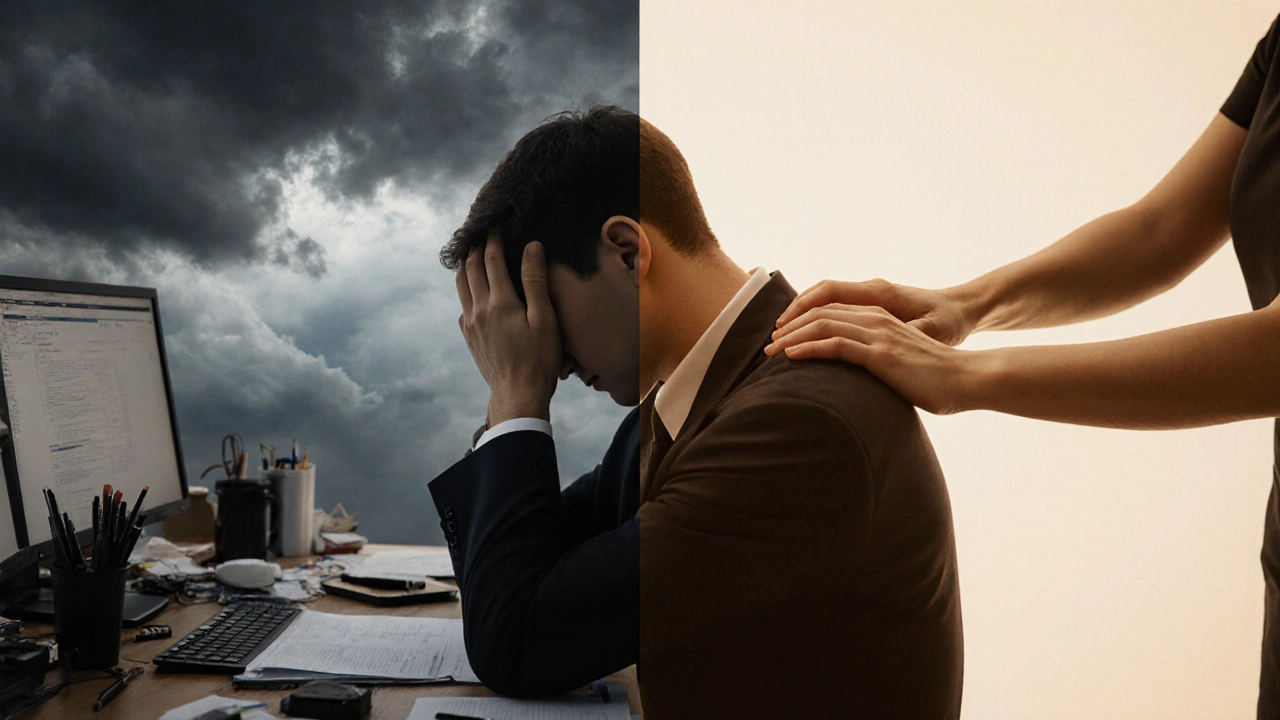
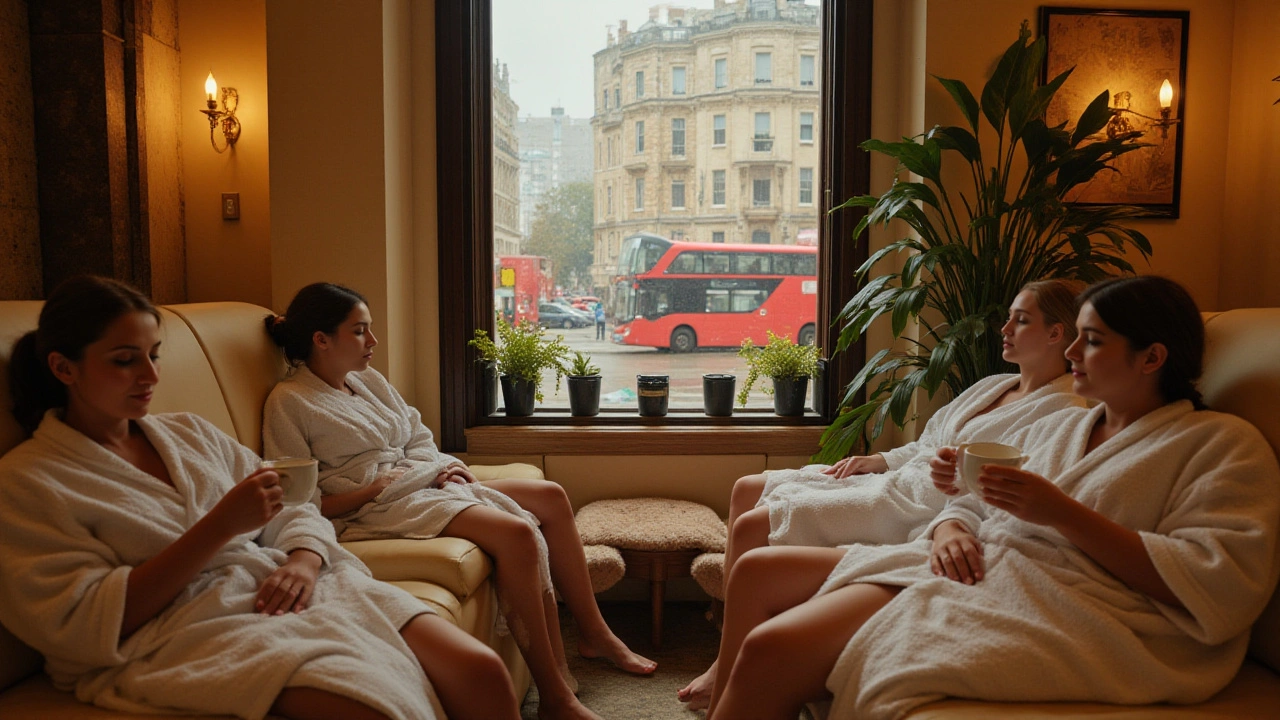
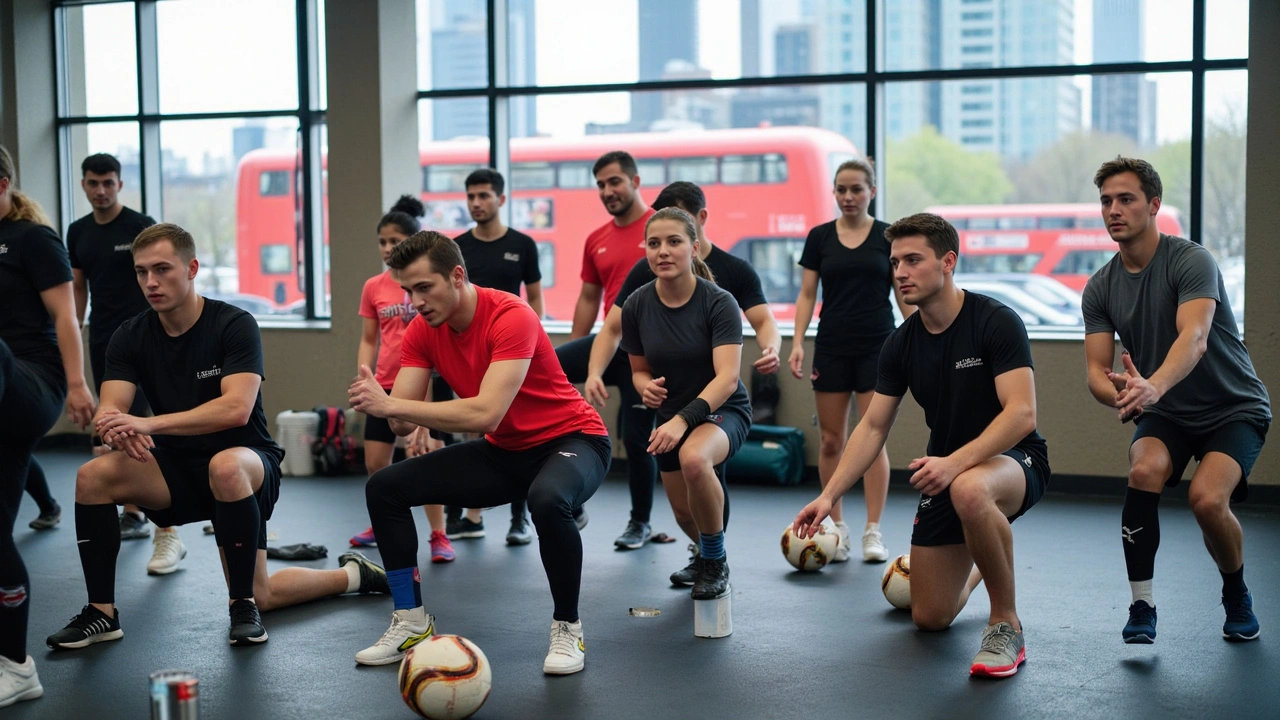
Hannah Ronquillo
November 21, 2025 AT 21:09I started doing the tennis ball roll after work, and honestly? My plantar fasciitis hasn’t been this quiet in years. I didn’t believe it at first, but consistency is everything. Now I keep one under my desk at work-rolling it during Zoom calls feels like a secret reset button. No more morning heel screams.
Also, the frozen water bottle trick? Genius. I keep one in the freezer and roll it before bed. Cold + pressure = instant relief. No fancy gadgets needed.